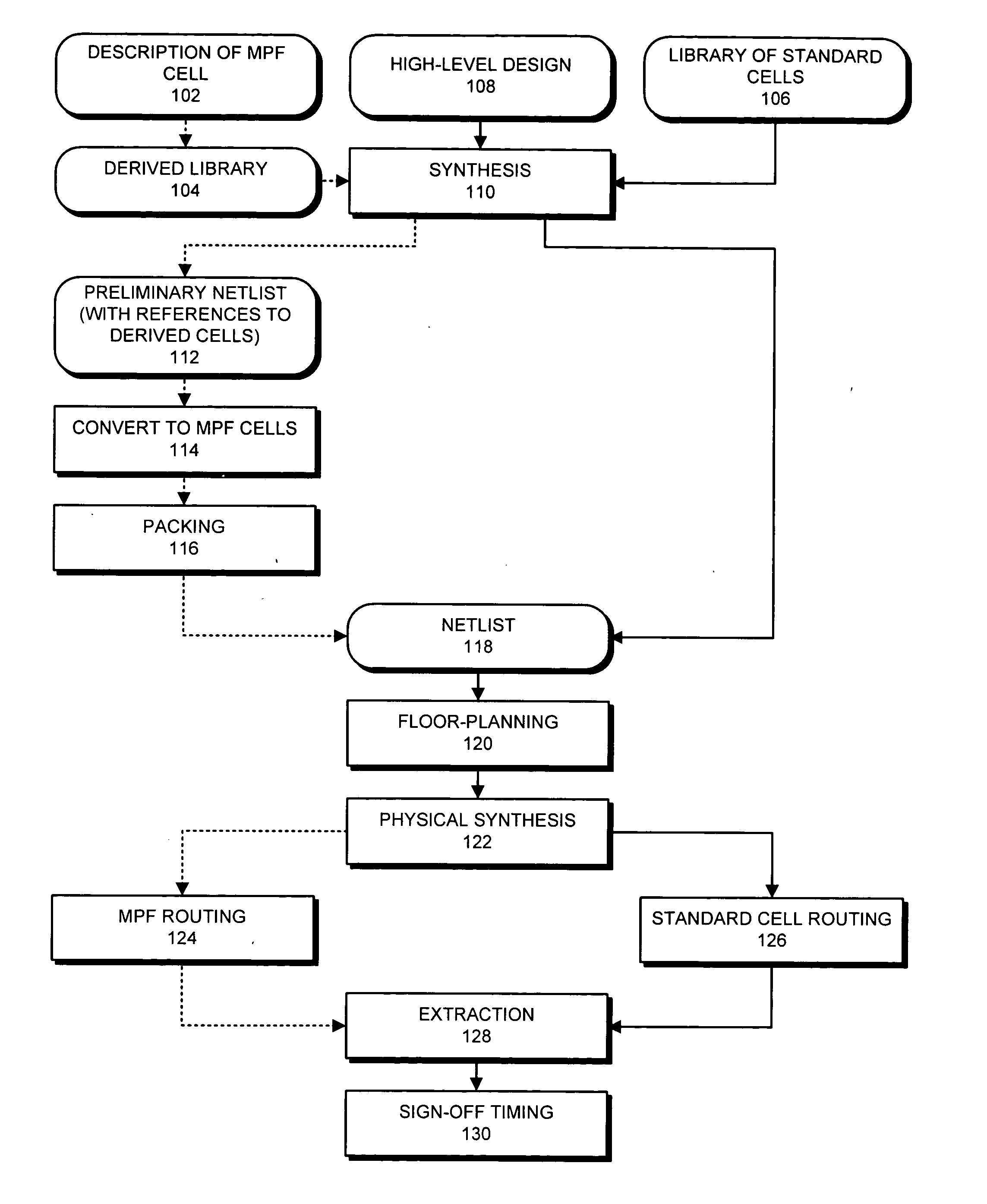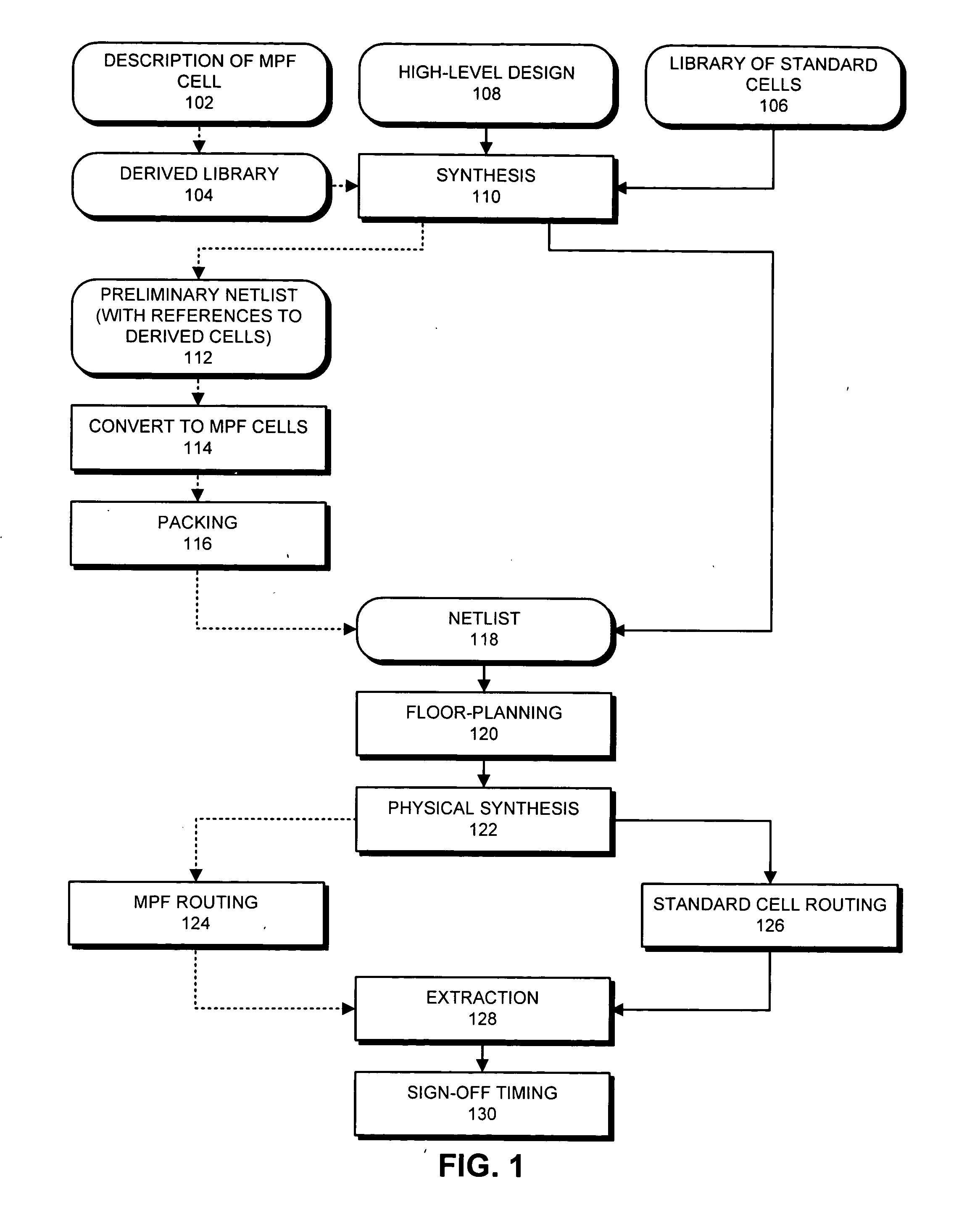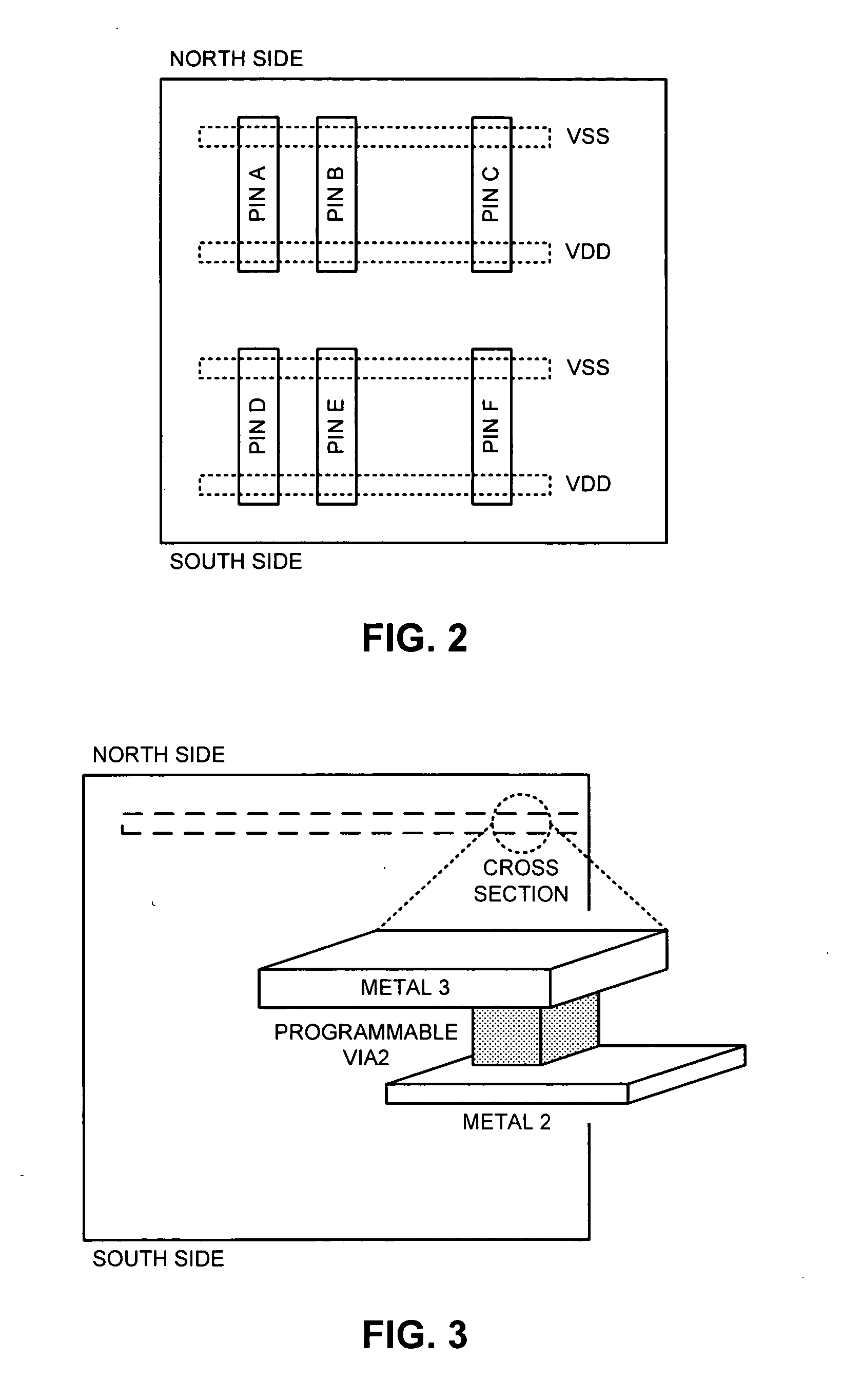Method and apparatus for creating a mask-programmable architecture from standard cells
- Summary
- Abstract
- Description
- Claims
- Application Information
AI Technical Summary
Benefits of technology
Problems solved by technology
Method used
Image
Examples
example routing
Fabric
[0063]FIG. 4 presents an exemplary mask-programmable fabric 400 in accordance with an embodiment of the invention. Mask-programmable fabric 400 includes a two-dimensional array of MPF cells 401-412, which can be programmed by modifying vias between metal layers as described above.
example cell
[0064]FIGS. 5A-5C illustrate the structure of a simple MPF cell. This exemplary cell is architected so that all internal connections are on metal 1, and pins appear as vertical strips on metal 2 as shown in FIG. 5A. The power and ground pins appear on the north and south edges of the cell on metal 1 and are not shown. In addition, we route power and ground on two horizontal metal 3 segments each, which intersect the vertical spans of the pins. This supports logic programming efficiently because each pin can be easily tied to power or ground by means of a via from metal 2 to metal 3. Moreover, note that each pin can connect to a horizontal metal 3 segment that intersects its vertical span for routing.
[0065] In this example, the metal 3 and metal 4 routing fabric is comprised of metal segments and is shown in FIG. 5B and FIG. 5C, respectively. Note that four segments on metal 3 are reserved for power and ground. Hence, they are unavailable for interconnect routing.
[0066] Metal 5 seg...
PUM
 Login to View More
Login to View More Abstract
Description
Claims
Application Information
 Login to View More
Login to View More - R&D
- Intellectual Property
- Life Sciences
- Materials
- Tech Scout
- Unparalleled Data Quality
- Higher Quality Content
- 60% Fewer Hallucinations
Browse by: Latest US Patents, China's latest patents, Technical Efficacy Thesaurus, Application Domain, Technology Topic, Popular Technical Reports.
© 2025 PatSnap. All rights reserved.Legal|Privacy policy|Modern Slavery Act Transparency Statement|Sitemap|About US| Contact US: help@patsnap.com



